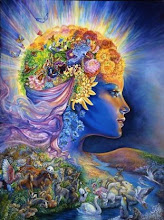
Killingsworth and Palmer describe "A Fable for Tomorrow" as a "brief experiment in science fiction,” one that “invokes the specter of ‘evil science’ (embodied in popular culture as the mad scientists of comic books and the egghead aliens of science fiction movies).” In a sense, Killingsworth and Palmer suggest that Carson presents to the reader a narrative in which scientific progress and human mastery of the physical environment are unable to coexist without compromise and consciousness. Carson criticizes the anthropocentric approach that scientists adopt in their desire to control and improve nature, which leads to its “abuse.” This agenda backfires and brings about the destruction of “nature” per se and its elements. Obviously, Carson is against the scientific approach that locates the scientist-researcher above “nature” and assumes the superiority of science over any other discipline (as illustrated by the rhetorical model for environmental discourse in Herndl and Brown’s introduction on p.11). However, as Killingsworth and Palmer suggest, she “criticizes science while holding out hope for scientific solution” (30). I’m wondering how hard it was for her to become a nature writer after encompassing the science community for most of her career.

Carson urges the reader to think about the severity of the situation and to take action. By starting with “A Fable of Tomorrow,” Carson does not prepare her readers for what they are about to read. She shocks her readers! The use of an apocalyptic narrative that functions as a “shock tactic,” alarms her readers and make them feel uncomfortable to attract their attention. Although Carson’s warning prose is evident, she adopts a millennialist approach that does not view the end of the world as absolute. After all, there is an implication that human progress and the preservation of nature can go hand in hand.

Carson knew when to speak up about these issues that place her work among the most celebrated environmental discourses. Around the time of the book’s publication, the public was growing uneasy over science and the military in the Cold War era (K&P 22). This provided a good opportunity for starting a counterhegemony, a term Cooper uses to describe “a new common sense and with it a new culture and a new philosophy which will be rooted in the popular consciousness with the same solidity and imperative quality as traditional beliefs,” that helped set the stage for the environmental movement and questioned humanity's faith in technological and industrial progress (241). Although she identifies the “villains” as the people themselves (the users of DDT), science, technology, progress, and growth are not referred to as the enemies in her narrative. On the contrary, she writes, “It is not science per se that is to blame for the wrong doings of the pesticide industry, but a particular approach to science, a paradigm” (29). She argues for a “paradigm shift”—a holistic work-with-nature model. This holistic vision makes her “appeal to the readers simultaneously threatened and encouraged by scientific advances” (31).
Her ability to recognize the dangers of this technological progress and her appeal for a more responsible utilization of science provided a catalyst that affected not only her environment, but also the world of future generations. It was her expose that led to the ban of the use of DDT and opened the eyes of the public to the complexity of the balance between human needs and natural resources. I’m wondering what role gender played in Carson’s ultimate success. How did she recognize the urgency facing the nation and the world as it began to understand the limitations of natural resources? How do we read the apocalyptic narrative of Carson’s Silent Spring as relevant to a modern reader’s perspective?








